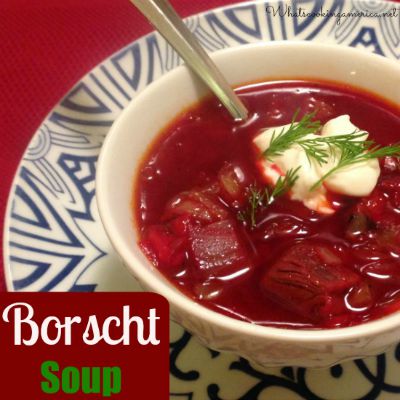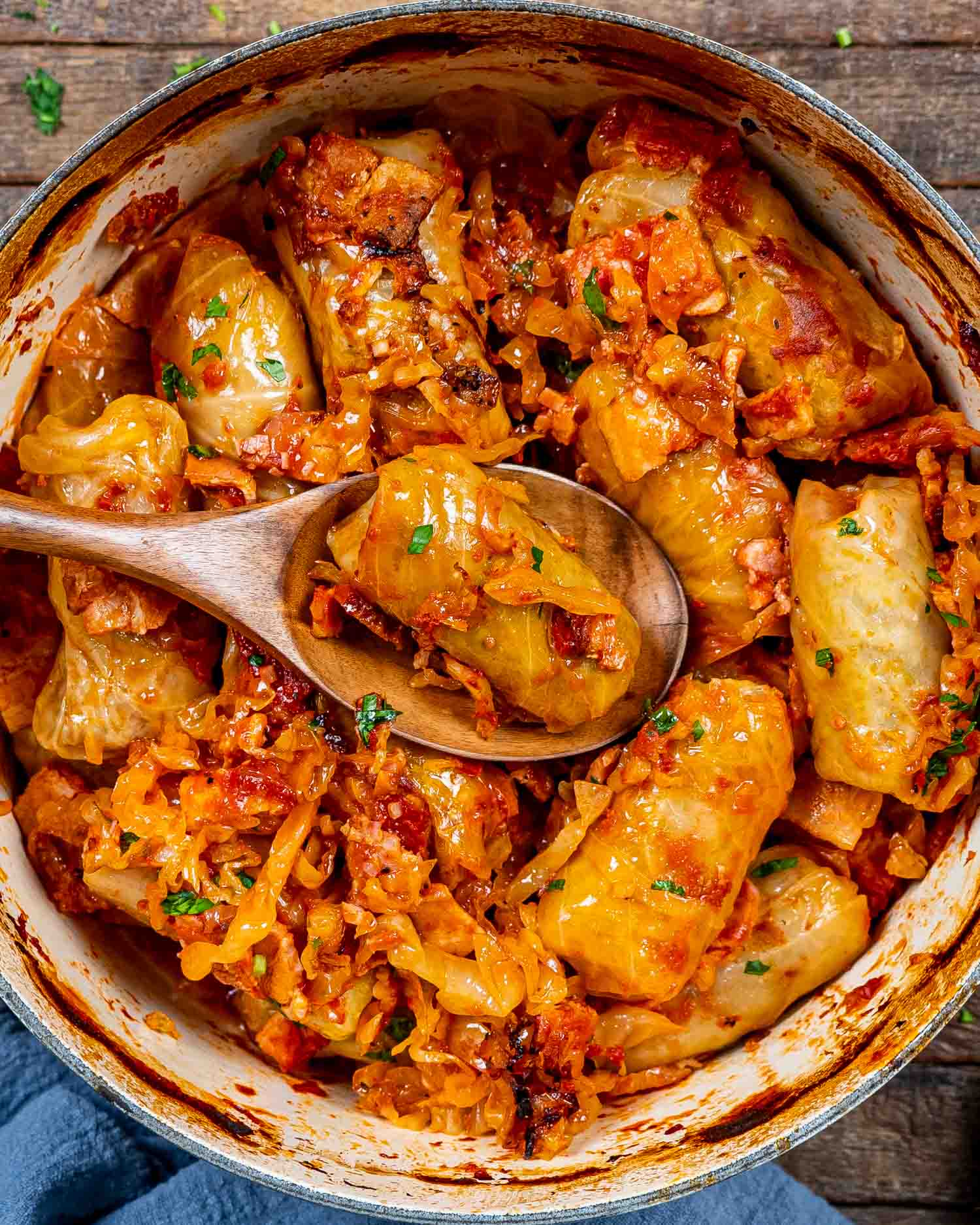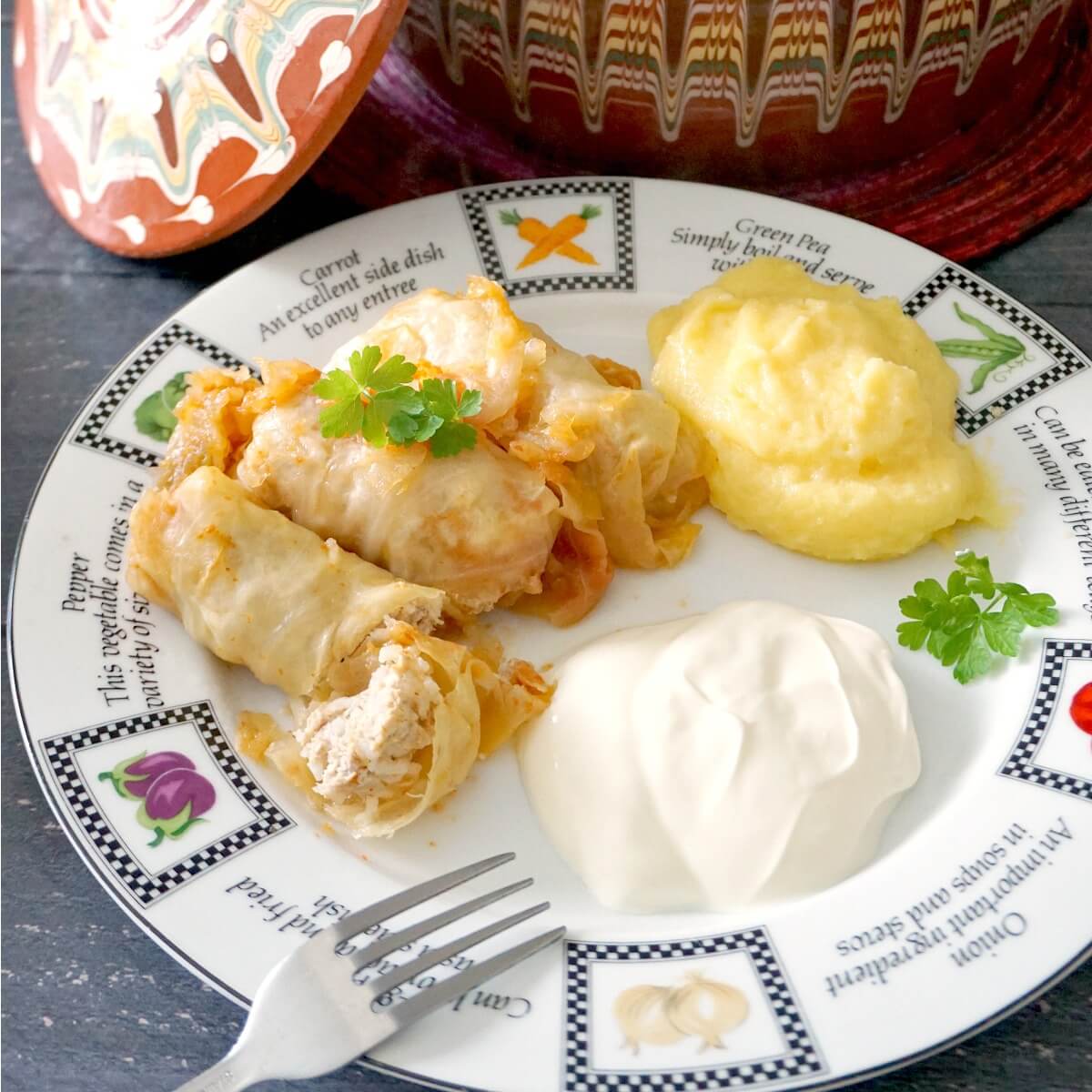Are you a foodie who can't resist delving into unique and flavorful cuisines? Then get ready to discover the best food that Eastern Europe has to offer. From hearty comfort dishes to tasty traditional desserts, Eastern European cuisine is truly a culinary adventure. In this blog, we will provide an overview of Eastern European cuisine, explore the cultural influences on the food, and give you a taste of the best dishes you must try. Get your taste buds ready for a tantalizing journey!
Overview of Eastern European Cuisine
Eastern European cuisine is a delightful mix of flavors, often characterized by its rich and hearty dishes. From savory stews to delicious dumplings, Eastern European cuisine offers a wide range of options to satisfy any food lover's cravings. The cuisine is often influenced by the history, geography, and climate of the region, making it diverse and unique in its own way.
In countries like Russia, Ukraine, and Belarus, you'll find dishes like borscht, a vibrant beet soup packed with flavors, and pelmeni, mouthwatering meat-filled dumplings served with sour cream. Poland is famous for its pierogi, a delightful treat consisting of dumplings filled with various ingredients like cheese, potatoes, or meat.
Moving further south, you'll encounter countries like Hungary and Romania, known for their indulgent dishes. Goulash, a rich and hearty stew made with beef, onions, and paprika, is a staple in Hungarian cuisine. Romanian cuisine is highlighted by dishes like sarmale, cabbage rolls stuffed with a blend of minced meat, rice, and aromatic spices.
Cultural Influences on Food in Eastern Europe
The diverse and rich history of Eastern Europe is reflected in its culinary traditions. Over the centuries, various cultures and civilizations have left their mark on the region, influencing its food in profound ways. From the Mongols to the Ottomans, each invader brought new flavors and techniques, creating a fusion of tastes that sets Eastern European cuisine apart.
In countries like Romania and Bulgaria, Ottoman influences are evident in dishes like kebabs and baklava. The use of aromatic spices like cinnamon and cloves add a unique depth of flavor to these dishes. In Ukraine and Russia, the cuisine has been heavily influenced by the Mongols, resulting in the popularity of dishes like shashlik, succulent skewered meat cooked to perfection over an open fire.
Eastern European cuisine also celebrates the abundance of dairy products, including cheeses and yogurt. This can be traced back to the nomadic tribes that roamed the region, relying on their herds for sustenance. The love for dairy is seen in dishes like syrniki, a delectable pancake made with cottage cheese, and smetana, a rich and tangy sour cream often used as a topping.
Best Examples
Now that we've whetted your appetite, it's time to explore some of the best dishes Eastern Europe has to offer. In Poland, you can't miss out on trying the iconic pierogi, which come in a variety of fillings and can be enjoyed boiled, fried, or baked. These pillows of goodness are perfect for a quick snack or a full meal.
If you find yourself in Hungary, be sure to indulge in a bowl of goulash. The tender beef, the warming paprika, and the rich flavors will transport you to a culinary heaven. And don't forget to pair it with Hungarian wine, which is gaining international recognition for its exceptional quality.
In Ukraine, make sure to try borscht, the vibrant red beet soup that is both delicious and visually stunning. It's often served with a dollop of sour cream and a side of freshly baked bread, creating a harmonious blend of flavors.
These are just a few examples of the incredible food Eastern Europe has to offer. So go ahead, explore the culinary wonders of this region, and let your taste buds embark on a flavorful adventure. Eastern European cuisine is waiting to delight and surprise you at every turn.

Borscht: A Ukrainian Classic
History and Background of Borscht
Ah, borscht, the beloved Ukrainian dish that has captured the hearts (and stomachs) of many. Let's delve into the history and background of this iconic soup and discover what makes it so special.
Believe it or not, borscht has been around for centuries, with its roots dating back to the medieval times in Eastern Europe. This hearty soup has stood the test of time and has become one of Ukraine's most cherished culinary creations.
Legend has it that borscht originated in what is now Ukraine, where it was enjoyed by peasants as a nutritious and filling meal. The dish gained popularity and eventually made its way into the kitchens of nobles and the upper class. Today, it is considered a staple in Ukrainian cuisine and is often hailed as a national dish.
Traditional Ingredients and Preparation
Now, let's talk about the star of the show: the ingredients that make borscht so flavorful and comforting. Traditional borscht typically includes beets, cabbage, potatoes, carrots, onions, and garlic. These humble ingredients come together to create a symphony of flavors that will leave you craving for more.
Preparation of borscht is an art form in itself. The beets are the key ingredient, providing the vibrant red color that is characteristic of the soup. They are usually grated or finely chopped and sautéed with onions and garlic to unlock their earthy sweetness. The other vegetables are then added, along with a hearty broth, to simmer and meld together, creating a harmonious blend of flavors.
But wait, there's more! Borscht often features another important component: meat. Whether it's beef, pork, or even ham, adding a protein element elevates the soup to a whole new level. The meat is typically cooked separately and then added to the simmering broth, infusing it with rich and savory flavors.
Of course, no discussion about borscht would be complete without mentioning the toppings. A dollop of sour cream is a classic addition, adding a creamy and tangy touch to the soup. Fresh dill, another essential ingredient, provides a burst of freshness and adds an aromatic dimension to the dish. And let's not forget about the crusty bread, perfect for soaking up every last drop of that delicious broth.
Now that you know the history, ingredients, and preparation of borscht, it's time to grab a bowl and experience this Ukrainian classic for yourself. With its vibrant colors, hearty flavors, and nourishing qualities, borscht is sure to warm your soul and leave you wanting more. So, go ahead, indulge in a bowl of borscht and let the taste of Eastern Europe transport you to a world of culinary delight.

The Best Food in Eastern Europe
Who needs a fancy Michelin star restaurant when you can explore the culinary wonders of Eastern Europe? From hearty stews to mouthwatering pastries, this region is a foodie's paradise. Let's take a sarcastic journey through some of the best food you can find in Eastern Europe.
Varieties of Pierogi
Oh, pierogi, those delightful little dumplings that will make your taste buds do a little happy dance. These pillowy pockets of goodness come in a variety of flavors and styles that will leave you wondering why you haven't tried them before. Polish cuisine has truly blessed us with this gift.
You can find pierogi filled with classic ingredients like cheese and potato, sauerkraut and mushroom, or even savory meat fillings like beef or chicken. But why stop there? Eastern Europeans love to get creative with their pierogi. You'll find unique fillings like blueberries for a burst of sweetness, or even cabbage and bacon for a more indulgent experience.
Popular Fillings and Cooking Methods
When it comes to pierogi, there are endless possibilities for fillings. Each country in Eastern Europe has its own twist on this classic dish, making it a culinary adventure.
In Poland, potato and cheese reign supreme. The combination of creamy mashed potatoes and tangy cheese is a match made in heaven. These little pockets of joy are usually boiled and then fried to give them a crispy exterior. Serve them with a dollop of sour cream and watch your taste buds leap with joy.
Ukraine takes a different approach with their varenyky, a variation of pierogi. They often stuff them with cottage cheese or fruits like cherries or strawberries. Boiled to perfection and served with a drizzle of melted butter and a sprinkle of sugar, these varenyky will transport you to a cozy grandmother's kitchen.
Now let's talk about the cooking methods, because who doesn't love a good debate? Some argue that boiling is the only way to achieve that perfect, tender texture, while others swear by frying for a crispy, golden crust. Why not try both? Boil them first to get that melt-in-your-mouth effect, and then fry them in butter for a delectable crunch. Trust me, your taste buds will thank you for the extra effort.
So there you have it, folks, just a glimpse into the wonders of Eastern European cuisine. From the comforting goodness of pierogi to the hearty flavors of borscht, there's something for everyone to enjoy. So why not plan a trip to Eastern Europe and indulge in the mouthwatering delights this region has to offer? Just remember to pack your stretchy pants, because you're in for a treat. Bon appétit!

Cabbage Rolls: A Romanian Delicacy
Ah, cabbage rolls, the epitome of elegance and sophistication in Romanian cuisine. These delightful creations are a shining star in the culinary world of Eastern Europe. We can't help but marvel at the genius of combining tender cabbage leaves with a savory filling, creating a symphony of flavors that will make your taste buds sing. So, let's delve into the secrets of this Romanian delicacy, shall we?
Traditional Recipe for Cabbage Rolls
Preparing cabbage rolls is an art form that has been passed down through generations in Romania. The process may seem a bit intimidating at first, but fear not, because the result is well worth the effort. Here's a traditional recipe to get you started on your cabbage roll journey:
- Gather your ingredients: cabbage leaves, ground meat (typically a combination of beef and pork), rice, onions, garlic, tomatoes, tomato sauce, and a medley of spices including paprika, thyme, and bay leaves.
- Start by blanching the cabbage leaves in boiling water until they become pliable. This will make them easier to roll and ensure a tender texture.
- In a skillet, sauté the onions and garlic until fragrant, then add the ground meat and cook until browned. Don't forget to season it generously with the spices to infuse the filling with a burst of flavor.
- Add the rice and a splash of water to the meat mixture, cooking until the rice is partially cooked.
- Now comes the fun part – assembling the cabbage rolls. Take a blanched cabbage leaf, place a generous spoonful of the meat and rice filling in the center, and roll it up tightly, tucking in the sides to seal in the deliciousness.
- Line a pot or baking dish with tomato sauce and sliced tomatoes, then carefully arrange the cabbage rolls on top. Add more tomato sauce and place a few bay leaves on the surface for an extra touch of aroma.
- Let the rolls simmer gently over low heat for a couple of hours, allowing the flavors to meld together and the cabbage to become tender. Be patient, my friend, for good things come to those who wait.
- Serve the cabbage rolls hot, savoring each bite as the flavors dance on your palate. Pair them with a dollop of sour cream and a slice of crusty bread for the ultimate Romanian experience.
Serving Suggestions and Variations
As a true connoisseur of cabbage rolls, you might find yourself wondering about different ways to enjoy this Romanian delicacy. Fear not, for we have a few suggestions up our sleeves to satisfy your culinary curiosity:
- Experiment with fillings: While the traditional meat and rice filling is divine, feel free to explore other options. Vegetarian? Swap the meat for a medley of mushrooms and grains. Feeling adventurous? Add a touch of uniqueness by incorporating a blend of spices, herbs, and even nuts to elevate your cabbage rolls to a whole new level of tastiness.
- Get saucy: The beauty of cabbage rolls lies in their ability to taste even better when smothered in sauce. Enhance the experience by playing around with different tomato-based sauces or even a rich and creamy cheese sauce. Let your imagination run wild.
- Embrace side dishes: Cabbage rolls are a versatile dish that can be accompanied by an array of side dishes. Embrace the Romanian tradition and serve them with creamy polenta, pickled vegetables, or a refreshing cucumber salad. The contrasting flavors and textures will take your taste buds on a journey they won't soon forget.
There you have it, cabbage roll aficionados. An introduction to the world of Romanian delicacies, where tender cabbage leaves are transformed into exquisite culinary delights. So, don your chef's hat and embark on a cabbage roll adventure that will leave you craving for more. Trust me, once you've tasted the wonders of this Eastern European gem, you'll never look at cabbage the same way again. Bon appétit!

The Best Food in Eastern Europe
Oh, Eastern Europe, the land of hearty cuisine and flavors that will make your taste buds rejoice! From savory stews to delightful pastries, this region is a culinary paradise waiting to be explored. And amidst all the deliciousness, there is one dish that stands out among the rest – the glorious Sarmale, also known as Romanian Stuffed Cabbage Rolls. Let's dive into the world of Sarmale and discover what makes it the best food in Eastern Europe.
Distinctive Herbs and Spices Used in Sarmale
Now, let's talk about the flavor explosion that happens inside those tightly rolled cabbage leaves. One bite of Sarmale will take you on a journey of tastes and aromas that you've never experienced before. What sets this dish apart are the distinctive herbs and spices that are infused into every morsel. From the earthy notes of paprika to the fragrant hint of thyme and the subtle sweetness of bay leaves, the combination is sheer perfection. Romanian grandmas have perfected the art of balancing these flavors, creating a symphony of taste that will leave you begging for more.
Regional Variations and Accompaniments
Now, let's not forget that Eastern Europe is a melting pot of culinary traditions, and Sarmale is no exception. As you traverse through the different regions, you'll encounter unique variations of this beloved dish. In Transylvania, for example, they might add a touch of dill to elevate the freshness of the filling. In Moldova, you might find Sarmale made with a mix of beef and lamb for an extra punch of flavor. Each region has its own twist, making the exploration of Sarmale an adventure in itself.
But wait, there's more! No plate of Sarmale is complete without its trusted sidekicks. Creamy polenta, with its smooth texture and subtle corniness, is the perfect companion to the bold flavors of the cabbage rolls. And let's not forget about the pickled vegetables that add a tangy crunch, cutting through the richness of the dish. Oh, and a refreshing cucumber salad, with its cool and crisp nature, provides a welcome contrast to the warm and comforting flavors of Sarmale. It's a symphony of taste and texture that will have you longing for Eastern Europe with every bite.
So, my fellow food enthusiasts, if you find yourself venturing into the culinary wonders of Eastern Europe, do not pass up the opportunity to sample the exquisite delight that is Sarmale. Let the meticulously rolled cabbage leaves and the flavorful filling transport you to a world of taste that will leave you craving for more. Just remember to come hungry, because once you've had a taste of these Romanian Stuffed Cabbage Rolls, there's no turning back. Eastern Europe will forever hold a special place in your heart, filled with memories of the best food you've ever had. Bon appétit, or as they say in Romania, Poftă bună!


